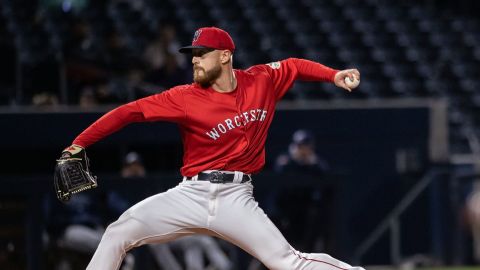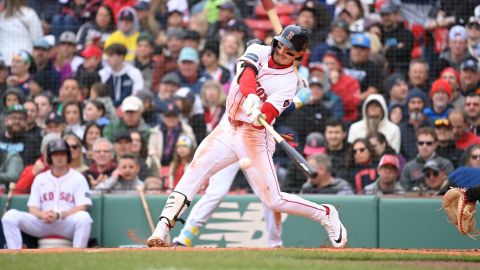Terry Francona may prefer the notion of going for big innings to the idea of playing small ball, but if he wants to be holding the Commissioner's Trophy at the end of the season, that thinking may need to be adjusted.
The Red Sox have some offensive talent in their lineup — there's no denying that — but the power that brought titles to Boston in 2004 and in 2007 just isn’t there anymore.
Manny Ramirez is 3,000 miles from Fenway, and David Ortiz’s pop feels like it also left for Southern California two years ago. Adrian Beltre and Mike Cameron have been prolific home run guys in the past, but now their biggest assets are their gloves.
Boston will undoubtedly win a few games with pure offensive might — and a 450-foot bomb onto Lansdowne Street will surely leave the bat of the home team at some point this season — but that is not how the Red Sox will win a championship.
They need to hit and run. They need to bunt. They need to steal bases.
Even the championship teams needed to rely on some small-ball principles. How would the past six years have turned out had Dave Roberts not pilfered second against the Yankees in 2004? If that were the case, Red Sox fans haplessly finding themselves in the Bronx could still be subjected to the painful chants of "1918."
Nobody is advocating that the 2010 Red Sox become a Billy Beane, Moneyball-type team — though in Michael Lewis’ book, Kevin Youkilis is referred to as the Greek god of walks — but Boston would benefit from adopting some different principles.
Jacoby Ellsbury brings dynamic speed to the table, and Dustin Pedroia swiped 20 bags last season. Beltre added 13 steals himself in 2009, and Marco Scutaro had 14, meaning that nearly half of the starting lineup has the ability to steal double-digit bases.
When you combine solid team speed with the steady veteran bats throughout the lineup, the hit-and-run becomes an enticing option. Even if Francona is unwilling to send hitters to the plate just to square up and move guys from station to station, it can work wonders to put runners in motion when you trust the batter to put the bat on the ball.
And the hit-and-run doesn't always threaten to lower the scoring potential. When you have true professional hitters, employing the hit-and-run can help break big innings wide open. You send a guy after he's already moving off the bag, and suddenly, the defense is out of position and, at the very least, a ground-ball double play is out of the equation.
If you can’t throw out long-ball threats throughout the middle of the order, it is necessary to mix things up. This doesn't mean committing to a type of offense that gives away outs, like Francona fears — but teams need small ball in their arsenals.
The ability — or inability — to play small ball is even more noticeable when the postseason rolls around. Every run is important, and if the sluggers go just a little cold, a team can find itself putting down the bat and picking up the golf bag in no time at all. Just ask the 2009 Red Sox.
The Red Sox certainly have the tools to fend off all other competition and get to the World Series, but if they get there, they will face a National League team that has been dealing with the small-ball approach all year long. Sure, there are teams like the Cardinals or Phillies with stacked lineups, but working around a pitcher’s spot helps to ingrain a mindset that when you need to do the little things to win, you can get it done.
Francona may have his guys work on bunting in simulated games and batting practice, but come October, if the Red Sox are down and need to move a runner into scoring position, you can bet that Boston's manager – and the rest of Red Sox Nation — will have more faith that his players can lay one down (instead of popping it up) if they’ve been doing it all season.
You don’t have to steal every base that’s up for grabs or hit-and-run every inning — but it wouldn’t hurt to try every once in a while.
***
From now until Opening Day, NESN.com will run down 25 things that need to happen for the Red Sox to win the World Series.
March 19: J.D. Drew produces so much he seems underpaid.



